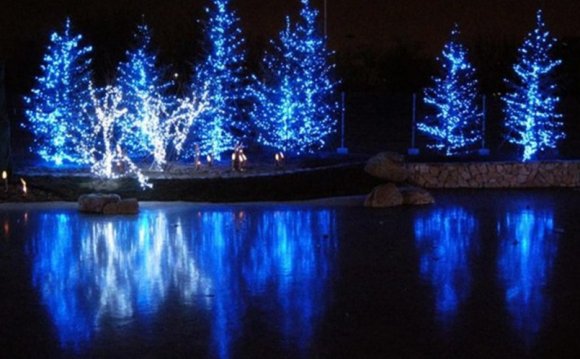
A fast-growing red maple, ‘Sun Valley’ brings outstanding fall color to a front yard. It’s a reliable shade tree with good leafhopper resistance. A medium size tree, growth tops out at 20 to 25 feet. Why we love it: This is a male variety—you won’t deal with seeds.
Red Buckeye (Aesculus pavia)
Eye-catching red blooms appear in early spring, and hummingbirds flock to them. This tree is a perfect choice if you’re designing a wildlife garden. These trees can grow up to 30 feet tall, but usually occur in the 8- to 10-foot range with an open form. Why we love it: Red buckeye is as drought tolerant as it is pretty.
Minnesota Strain Redbud (Cercis canadensis)
Tough and beautiful, this redbud has it all. Pink flowers appear before leaves in early spring, and brown seedpods take the spotlight in fall. Branches spread to give the tree a strong architectural appearance. Introduced by the Minnesota Arboretum, it’s hardy to Zone 4 and grows to 30 feet tall. Why we love it: It’s an unrivaled showpiece in early spring and will draw the envy of the neighborhood.
Crape Myrtle (Lagerstroemia indica)
Called the lilac of the South, crape myrtle brings on the flower show with long bloom clusters that open in a rainbow of hues. The tree has a graceful, architectural branching that graces a front yard with strong lines. Varieties grow from 4 to 11 feet tall. Why we love it: Peeling bark takes beauty over the top, creating a mottled looking trunk.
‘Little Volunteer’ Tulip Tree (Liriodendron tulipifera ‘Little Volunteer’)
Tulip poplar was a favorite tree on Southern plantations, planted near the home so folks could see the yellow tulip-like blooms from second story windows. Those trees soared to 60 feet or more. ‘Little Volunteer’ brings the height into reach of modern homes with small yards, topping out at 12 to 15 feet. Why we love it: For the yellow flowers, of course, but also for the narrow footprint. It grows 5 to 6 feet wide, which means it fits in even tiny yards.
Slender Hinoki False Cypress (Chamaecyparis obtusa ‘Gracilis’)
Meet the evergreen tree that’s suitable for any size yard. This slender beauty grows to 15 feet with a spread of only 5 feet. The arching branches offer an elegant appearance, especially with the drooping tips. Why we love it: It brings grace and beauty to the landscape in a plant that fits most front yards.
‘Autumn Brilliance’ Serviceberry (Amelanchier x grandiflora)
A native plant, serviceberry bursts into bloom in spring. The white flowers fade to dark colored berries that birds adore. Fall arrives with a flash of fiery color. Expect it to grow 20 to 25 feet tall. You’ll need to prune in early years to control crossing branches, but other than that, it’s a cinch to grow. Why we love it: This tree embodies multiseason interest. It doesn’t disappoint.
American Holly (Ilex opaca)
Deep evergreen leaves earn this tree a beauty award year-round. When berries appear, the tree is spectacular—and beckons birds by the dozens. The original species grows quite large, 40 to 50 feet tall and 18 to 40 feet wide. Look for varieties with a more modest footprint to fit modern yards. Many variegated types are available that bring even more interest to the landscape. Why we love it: It’s native, it grows slowly and it’s a great wildlife plant.
Pineapple Guava (Feijoa sellowiana)
This tropical fruit makes a great front yard tree, providing plenty of interest from showy spring blooms, to yummy fruits, to striking gray-green leaves. Both flowers and fruits have a refreshing, fruity perfume. Fruit tastes like a pineapple-guava or pineapple-strawberry blend. Birds like the fruit, too. Why we love it: Not only are the flowers pretty, they taste great, too, delivering a dose of sweetness.
Persimmon (Diospyros spp.)
This tree has a wow factor, courtesy of sculptural branching, chartreuse flowers and bright orange fruit. Leaves provide good shade in summer. Asian persimmons are smaller (15 to 20 feet tall), while American varieties are taller (35 to 50 feet). Why we love it: The fruit is versatile in the kitchen, working in everything from muffins to salads. They also make amazing naturally sweet fruit leathers.
‘Fastigiata’ Spruce (Picea pungens var. glauca ‘Fastigiata’)
Get the luxe look of a Colorado blue spruce in a tree that fits into small yards. ‘Fastigiata’ grows in a tight, columnar shape with a spread of 2 to 3 feet at maturity. It tops out around 15 feet. Needles have that classic blue spruce tint to them. Why we love it: Branches respond well to shearing, so you can keep plants even more narrow.















